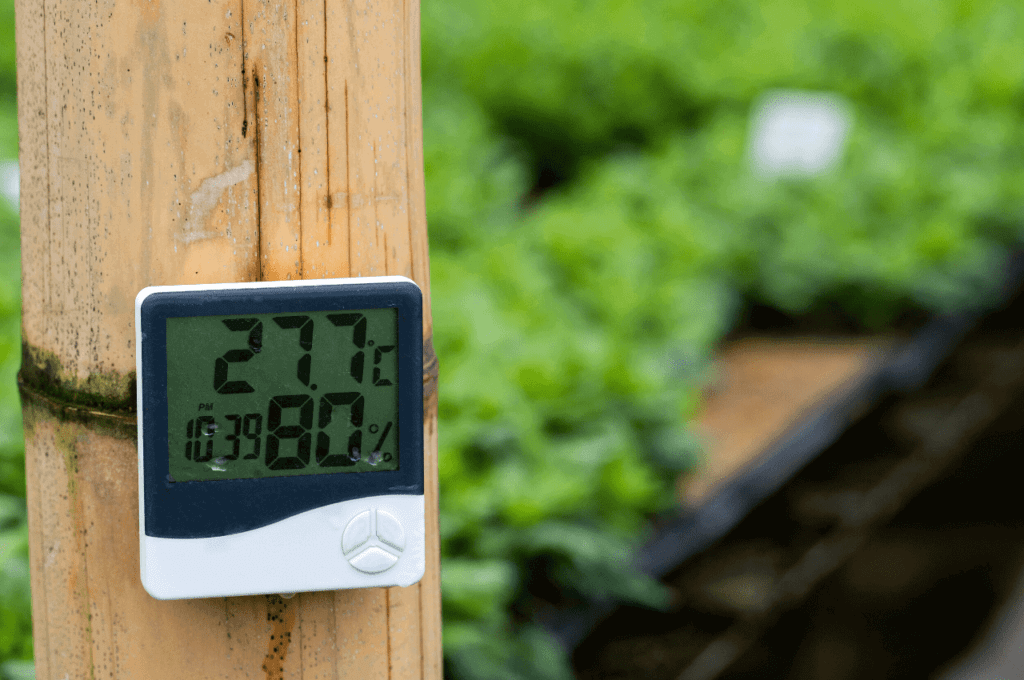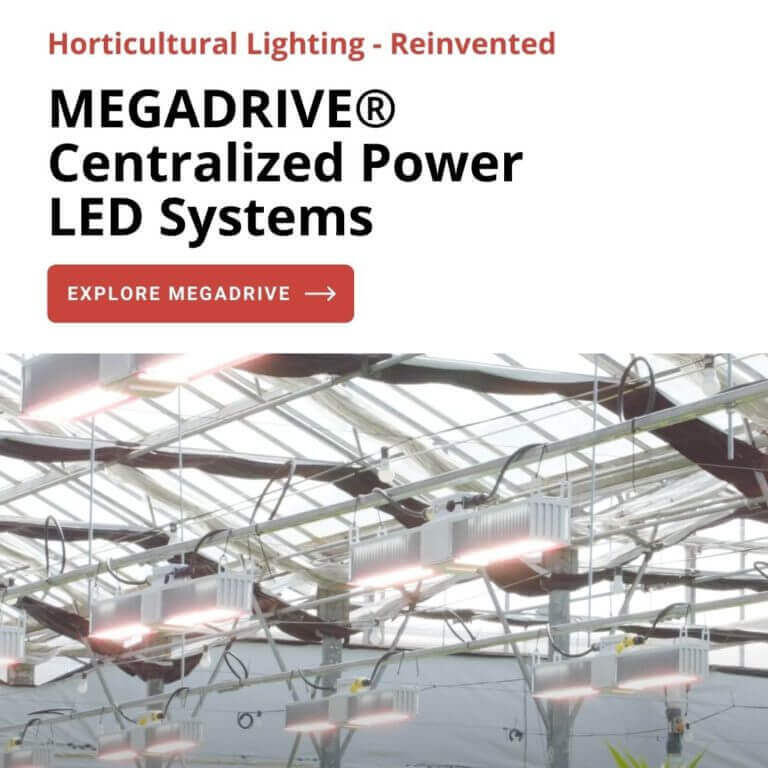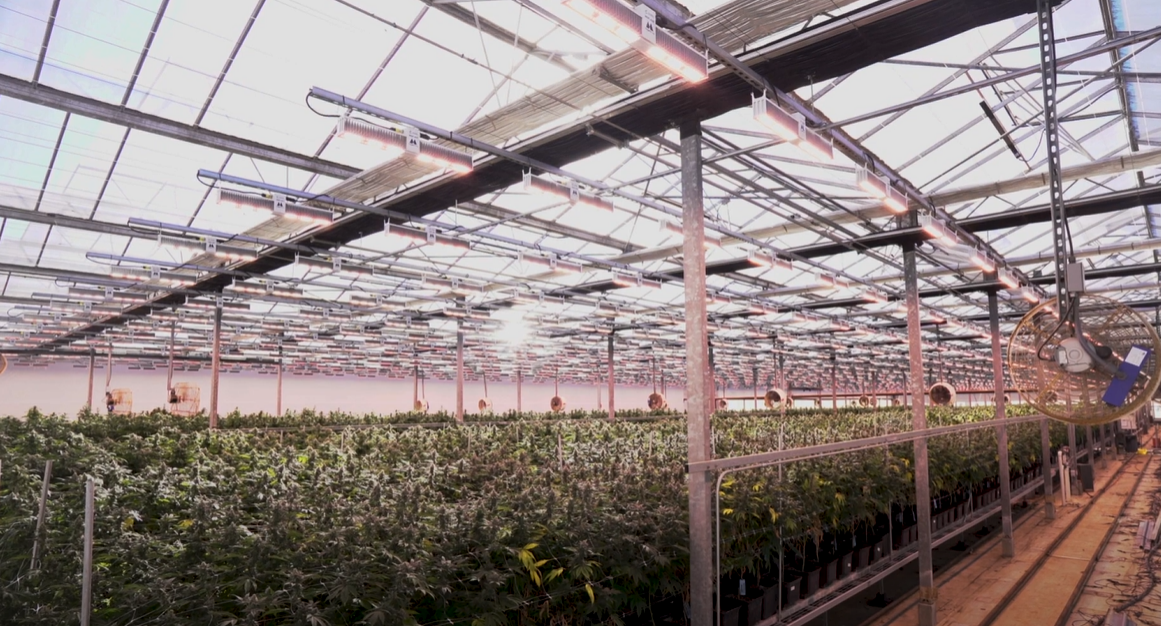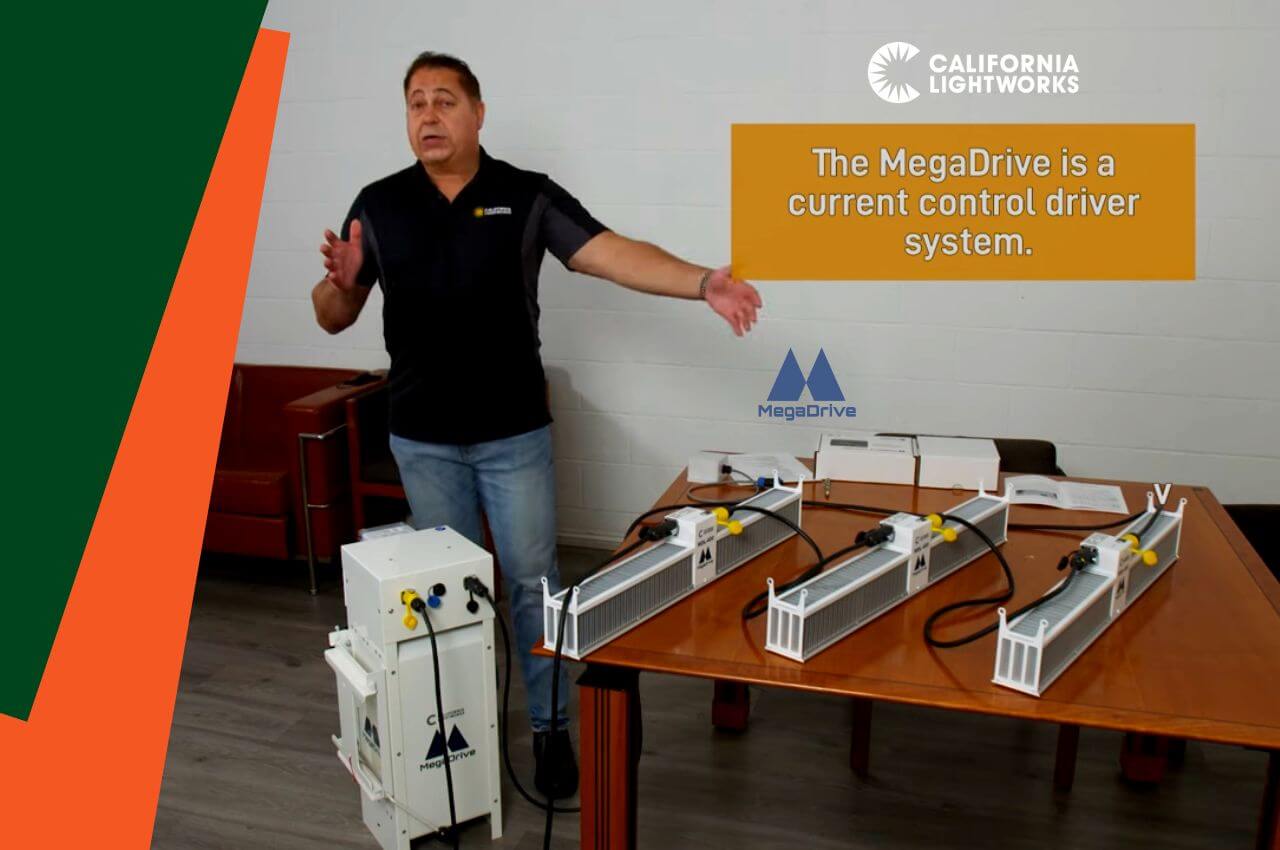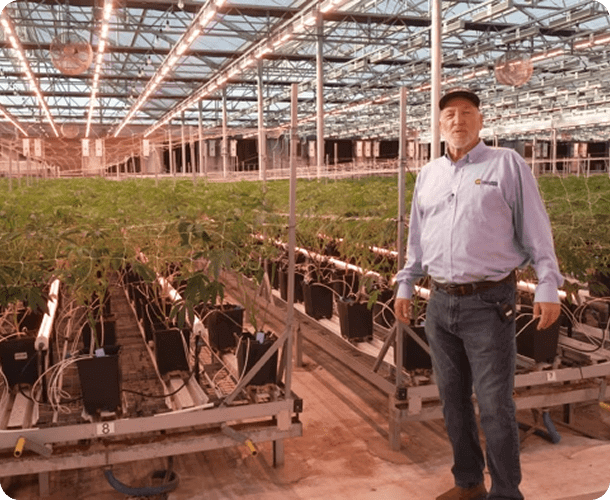An optimized, consistent greenhouse temperature is essential for healthy grows. The wrong temperature can compromise your humidity levels, cause your plants to stretch, or promote mold. Inconsistency causes stress for your crop. Greenhouse temperature even affects your plants’ ability to properly absorb CO₂.
This is why you must consider the climate inside your facility when designing your greenhouse. Some calculations can get complicated, but it is entirely possible to gain control of your greenhouse environment.
You just need to understand a few key principles.
Understand the Factors Affecting Greenhouse Temperature
Most growers already realize that the presence or absence of the sun has a significant influence on greenhouse temperature. Likewise, the climate of your facility changes with the seasons.
However, weather and geography are not the only factors that determine greenhouse temperature. As you strategize your own greenhouse infrastructure, consider the following.
Humidity
Temperature influences humidity, and humidity influences temperature. This means growers are tasked with finding an extremely delicate balance between the two.
Simply put, as the temperature increases, relative humidity decreases, and vice versa. Temperature control is humidity control.
If your greenhouse temperature is too low and your humidity is too high, your crops are at risk of developing mold, mildew, and pests. On the other hand, high temperature and low humidity inhibit growth.
The sweet spot is generally:
- 80-85 degrees Fahrenheit
- 50-70% humidity
Radiation Emitted by Plants and Soil
Plants and soil are always hard at work enacting the biological processes that allow your crops to grow. This means plants and soil are constantly creating energy themselves.
In other words, some of the heat inside your greenhouse is coming from natural forces within. It’s not all about the sun shining through glass.
Maintain greenhouse temperatures by ushering cooler air in near the ground (where your plants are) and directing warm air out through the roof. This helps your crop establish a consistent, healthy leaf temperature.
CO₂
The carbon dioxide levels within your greenhouse don’t exactly influence greenhouse temperature. But CO₂ is still relevant to the discussion.
There is a direct correlation between leaf temperature and the amount of carbon dioxide your plants are able to absorb. If you plan to incorporate CO₂ fertilization into your growth strategy, you may need to increase your greenhouse temperature as well.
Here is a comprehensive guide to CO₂ and temperature.
Design Your Facility with Climate in Mind
There is no one-size-fits-all solution for controlling greenhouse temperatures. Your geographical location and time of year have a huge impact on greenhouse temperature. You have to design your facility based on the demands of your location.
We think of greenhouses first and foremost as hot, sun-amplifying structures requiring ventilation and cooling. This is absolutely true, but for many growers, heating is the real challenge.
Greenhouse temperatures often plummet when the sun goes down or winter sets in. These structures are not naturally insulated against cool climates. You may need to include central heating or heating fans into your greenhouse design.
The same is true if you’re growing in a high-humidity climate. The walls of your greenhouse can protect your plants from elements like wind and rain. But the air outside still affects the air inside. Design accordingly.
Top Methods for Maintaining Consistent Greenhouse Temperature
There are seemingly endless options for stabilizing and maintaining the ideal greenhouse temperature. If you haven’t discovered that yet, you will soon.
For the sake of simplicity, here are the design elements that are most common in effectively regulated facilities.
Supplemental Greenhouse Lighting With Significantly Less Heat Output
For many crops, especially fruiting and flowering crops, grow lights are non-negotiable when it comes to greenhouse growing. High-quality lights promote high yields and top quality in every season.
However, sometimes supplemental lighting can make greenhouse temperature control more complicated. Traditional HID bulbs, for example, radiate a lot of heat, forcing growers to increase cooling costs.
Your best option is to choose LED grow lights for your greenhouse. LEDs emit significantly less heat. And the GH Pro 340 by California LightWorks even uses passive cooling to further simplify your infrastructure.
Vents
Your greenhouse must have a solid ventilation system. Not only do vents prevent overheating, they also promote air circulation.
Stagnant air is hard on your plants. It’s also a waste of CO₂ fertilization efforts, as your plants cannot absorb carbon dioxide if it never wafts their way.
We highly recommend mechanical ventilators that open and close automatically in response to greenhouse temperature changes. Vents are typically built into side walls or the greenhouse roof. The more you can automate environmental controls within your greenhouse, the more consistency you give your plants.
Fans
Fans are also essential for promoting air flow. The most common options include:
- Extraction fans, which exchange external air for internal air. This is a great option for cooling the facility and reducing humidity.
- Horizontal Airflow (HAF) fans—a relatively low-cost system that mounts to the roof and sides of your greenhouse. An HAF fan promotes equal air flow and greenhouse temperature throughout the entire space.
- Positive Pressure Cooling – outside air pushed by fans is run through a large tube under the benches. The outside air flows from under the bench and through the canopy to be exhausted out via wall fans or through the roof vents. This is an excellent way to control both temperature and humidity at the canopy level. This is also a great way to get CO2 under the leaves where it is needed most.
Humidifier
If you live in a dry climate or experience dry winters, invest in a humidifier. You can also increase humidity using a high-pressure fogging system.
Should you decide to use fogging to increase humidity, be choosy about your system. Some fogging systems expose your plants to large water droplets that can damage your crop.
Dehumidifier
On the flip side, prepare your greenhouse for humid weather with a dedicated dehumidifier or a solid heat and ventilation strategy to manage humidity. This is a top priority that should not be overlooked.
Shade Cloth
Shade cloths help you maintain greenhouse temperature in a few different ways.
First, they can block out sunlight when those solar rays are too much for your plants. (If you have a quality LED grow light, your plants will still get all the PAR they need.)
Shade cloths also come in a variety of weaves. Tight weaves trap humidity and maintain the greenhouse temperature as it is. This gives you control if you’re trying to insulate your space from the heat or cold outside. On the other hand, a looser weave allows humidity to escape.
Blackout Cloth
Some crops requite a blackout cloth to regulate the light period. This creates an enclosed environment within the greenhouse that may not benefit from the normal ventilation, heating or cooling systems. Also, it may be necessary to locate supplemental lighting under the blackout cloth to conform to light pollution regulations. In this case, LED lights are highly recommended due to the reduce heat output and the ability to have the lights closer to the canopy.
Cooling System
While the primary heat control systems inside a greenhouse are based on bringing in fresh air via ventilators, vents and curtains and regulating the sun with shade cloth, many greenhouses also use water cooling walls for temperature sensitive crops. Here, water passes over an entire wall and large fans draw the cool air into the greenhouse. This is a very effective cooling solution and is widely used in greenhouses for temperature sensitive crops.
Air conditioning is generally not used to cool greenhouses as the flow of outside air through the greenhouse cannot be effectively cooled by air conditioning. However, there air some hybrid greenhouse designs that take advantage of the sun but are also closed systems where air conditioning is more practical.
Heating System
Finally, your greenhouse should have a reliable heating system. You can decide which heating system is best based on the needs of your plants and the nature of your climate.
Just remember, you must be prepared to keep your plants at an optimal temperature at all times. Determine the coldest possible temperature in your area of the world. Figure out what system you need to have in place to protect your crop in that worst-case scenario.
A popular solution is a radiant central heating system based on using a steam boiler to send radiant heat through metal pipes that circulate throughout the greenhouse. Heat tubes can be placed below the benches so the heat will rise through the canopy. This is an efficient and cost-effective solution but requires significant infrastructure.
Natural gas forced hot air heaters, normally placed above the canopy, are also a popular solution for quickly heating a greenhouse. Natural gas is relatively low cost and simple to install.
Infrared heaters use special pipes mounted high in the greenhouse and natural gas or propane is used to heat the tubes which radiate heat down towards the canopy. Depending on the type of crop and outside environmental conditions, this can be a good heating solution.
Some greenhouse growers have used HID lighting as a heat source in the winter. However, this is a very inefficient heating source. Natural gas options are much more efficient than using electric lighting as a heat source.
Some modern greenhouses feature radiant heating built into the cement floor. This is an extremely efficient way to heat a greenhouse. It is both economical and the heat optimally located on the floor and will rise through the canopy. Obviously, this is a high-end solution available only in new greenhouse installations.
Maintaining greenhouse temperature is science. It takes a lot of work and planning in the initial stages. But once you establish a system of controls, you reap the rewards for your labor with incredible yields.
If there’s anything we can do to help you through your planning stages, please don’t hesitate to reach out.
We also invite you to learn more about the GH Pro 340. This supplemental LED grow light was designed specifically for greenhouse applications. It features low-cost installation, wireless digital spectrum control, and the highest quality LEDs on the market.
